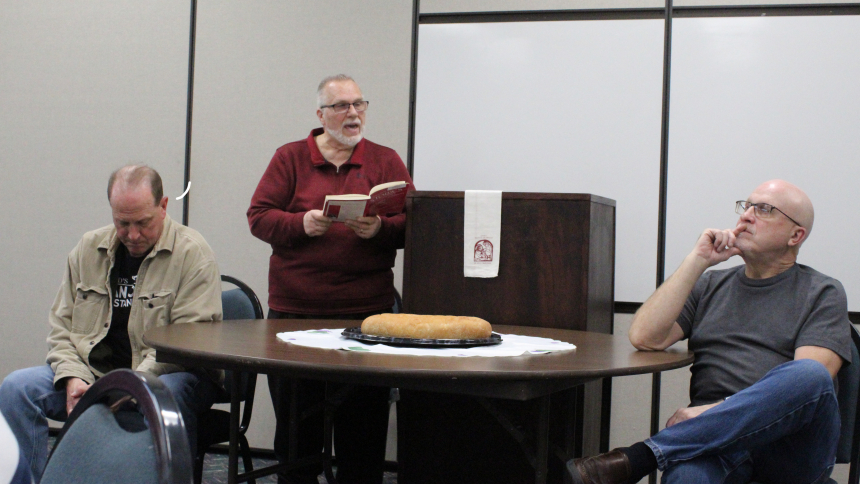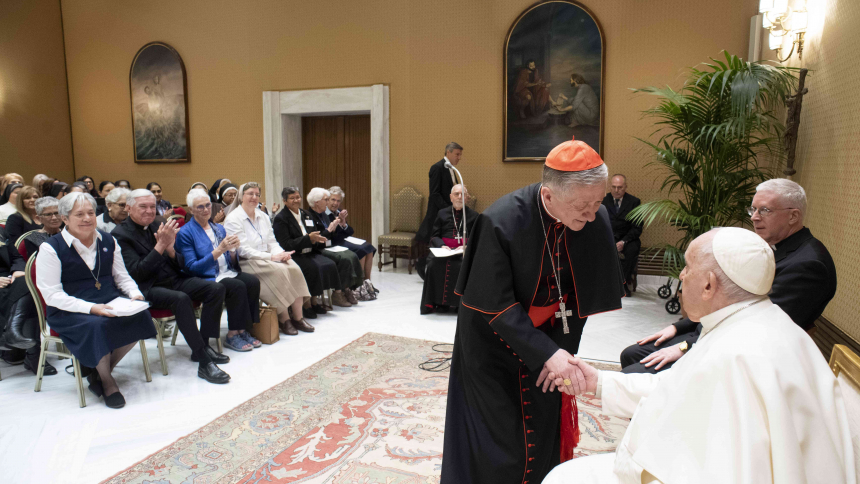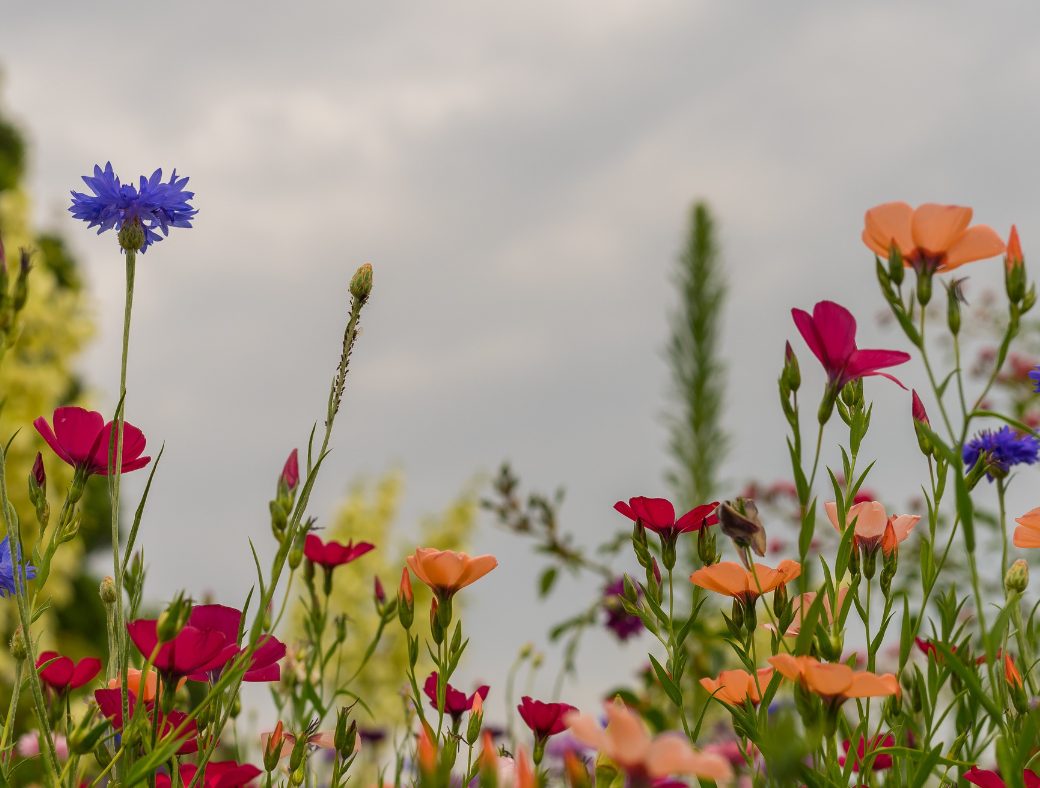By Marlene A. Zloza, Northwest Indiana Catholic
VALPARAISO – Challenging his audience to “live as missionary disciples,” facilitator Joe De Frier used actual loaves of bread to draw faithful Catholics closer to the Holy Eucharist during a three-part adult faith formation series hosted by St. Paul parish on May 8, 15 and 22.
“I want to open peoples’ hearts and minds up to conversion,” he said in introducing the series that focused on a deeper understanding of Christ’s Body and Blood by focusing on a complete history of the sacrament.
“We are looking at the Mass in a different way by looking at its Jewish roots, then putting the parts of the Mass together as they have changed,” noted De Frier, coordinator of adult faith formation at St. Paul. His sessions touched on the Introductory Rites, the Liturgy of the Word, and the Liturgy of the Eucharist.
Utilizing a series of videos, “A Biblical Explanation of the Mass,” presented by Dr. Brant Pitre, a research professor of scripture at Augustine Institute, a private Catholic graduate theology school offering master’s degree programs inspired by Pope John Paul II’s call for a New Evangelization, De Frier explained today’s procession to the altar that opens Mass to Moses entering the tent (tabernacle), at which time the people “would rise up and worship, every man at his tent door.”
In the three sessions, De Frier went on to explain the origins of the Kyrie Eleison, the Gloria, the Responsorial Psalm – likened to that sung daily by the Levites in the Temple – and the Gospel reading, which was derived from the Israelites standing when the Torah (Old Testament) was read.
“Catholics read more of scripture (at Mass) than other religions do in a year of worship – our daily readings at Mass offer much of the Bible,” said De Frier.
He termed the Liturgy of the Eucharist “very complex, like a tapestry of Biblical quotations,” and noted that the word ‘Mass’ means ‘missa’ – to be sent out into the world. “We’ve become prophets to the world,” De Frier said.
“The last words of the consecration that turns the cross into a sacrifice – the moment when Christ loves us and gives himself up for us, body, blood, soul and divinity,” De Frier said. “That’s why the priest elevates the host (and the cup), so you can adore, (and) worship Jesus, because it is the Body and Blood of Jesus Christ. Let us give thanks to the Lord for his gift to us of his Body and Blood.”
John Szczepanski, a St. Paul parishioner, said he came to the series on the Eucharist “because I wanted to hear what the Church teaches about the Eucharist and the Mass. I believe in ongoing formation, in continuing to learn.”
Asked why the Catholic Church has not come together with other Christian faiths that also believe in the Real Presence, De Frier said more dialogue is needed, but could lead to unification. “The more we sit down and listen to each other, the more we’ll begin to realize that there is more alike between us than is different,” he suggested.
De Frier said the Sunday Mass is supposed to be “a holy moment of peace.” The Eucharist, he added, “is supposed to be both the source of our life and the end (summit). It is a moment of challenge to action, not unresponsiveness.
“The Eucharist is where the Christian community remembers the life and death of Christ, so we can continue his mission on Earth. That is the heart of the Eucharist, proclaimed daily at Mass,” he said.
“Today, many of us have remembered the bread, but forgotten the Body of Christ,” De Frier said. “Some people have received the Eucharist so often that it has lost its punch. Receiving the Eucharist should be the most disturbing moment of our week,” he added, challenging Catholics that “it is the people we must remember … the people who exterminated six million people, who sacrifice our children and teachers for automatic weapons and greater profits, who bombed two cities in Japan, who are building an arsenal of weapons that can destroy the world, who continue to hoard, lie, steal and abuse our children, and who ignore the hungry and homeless yet build mansions for themselves to live in.”
De Frier concluded the series with a prayer service that touched upon missionary discipleship, using actual loaves of bread to signify a pledge to follow Jesus in washing the feet of his people. “Will we wash their feet today? Will we be willing to pay that awful price?” De Frier challenged his audience as they broke off and ate pieces of the bread at each table.
The “Body of Christ,” he explained, “is the community” of those who love and believe in the Word of God and seek to follow him. “Gather us to be nourished and to nourish each other.”



